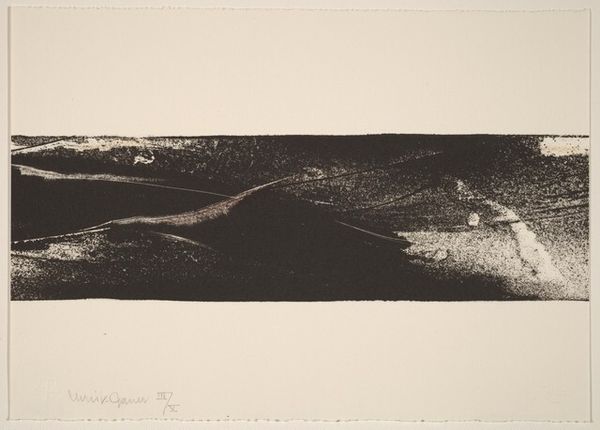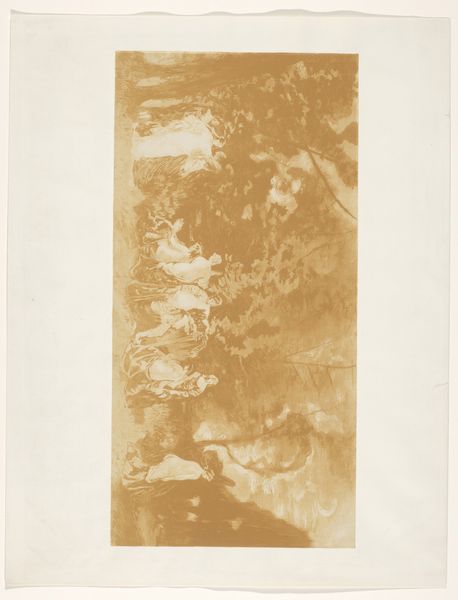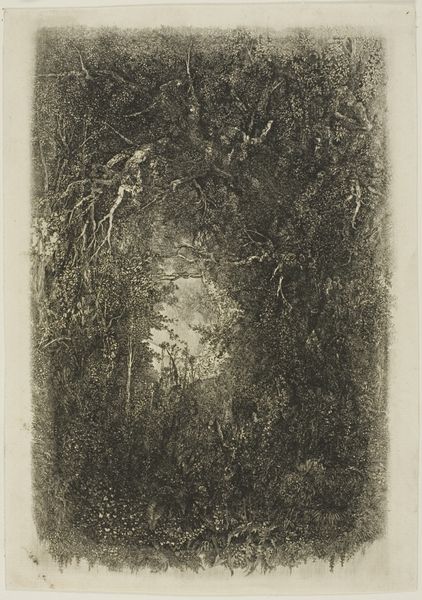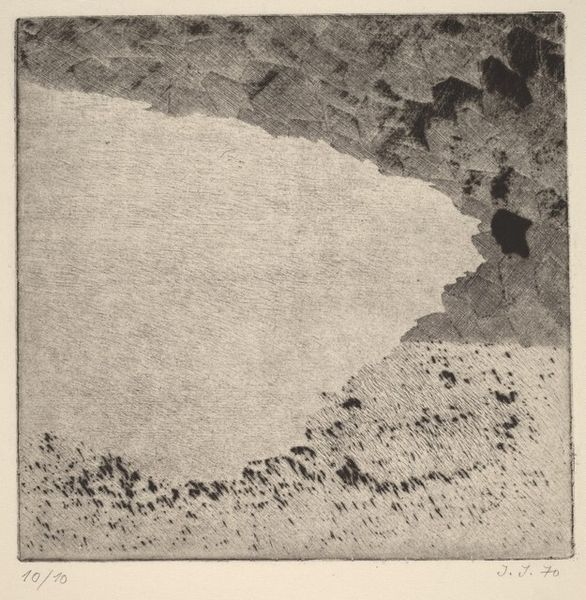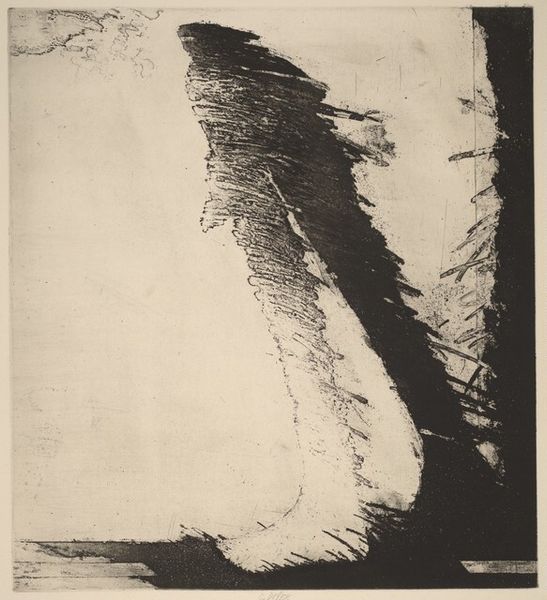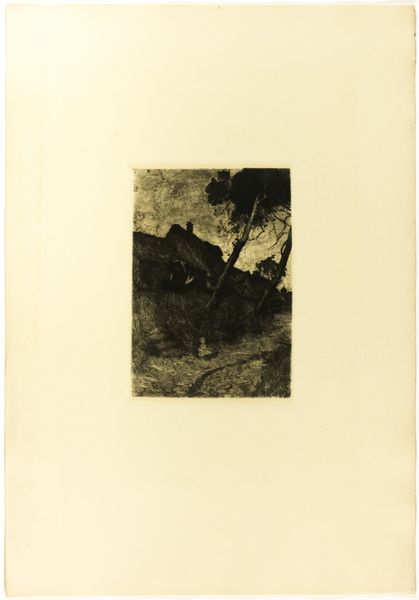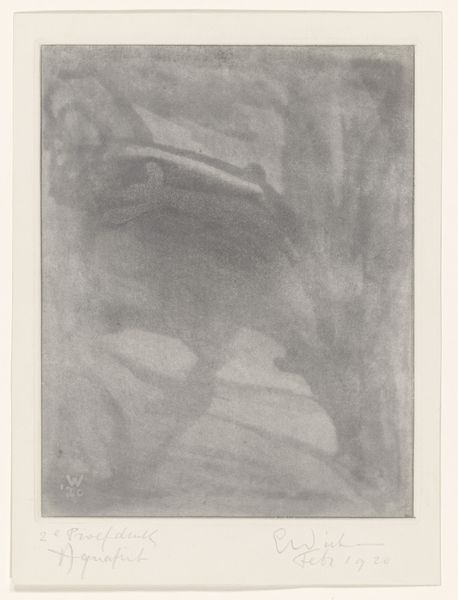
print, etching
# print
#
etching
#
landscape
#
geometric
Dimensions: plate: 15 x 10 cm (5 7/8 x 3 15/16 in.) sheet: 29.3 x 22.9 cm (11 9/16 x 9 in.)
Copyright: National Gallery of Art: CC0 1.0
Editor: Here we have Peter Milton's "The Hill," created in 1967, a black and white etching. There’s a really stark and desolate feel to it, even though it's a landscape. It makes me wonder what kind of a place is depicted and what does this choice of motif convey? Curator: The starkness is central, isn't it? Consider the period – the late 1960s. Social unrest, the Cold War… Art became increasingly concerned with anxiety and alienation. A seemingly simple landscape becomes a vehicle to discuss these concerns. What is so evocative in your opinion? Editor: I think it’s the contrast. It appears to be a natural setting, yet it's almost oppressive, unnatural. The textures are really exaggerated, adding to this kind of haunting mood. The sharp slope dominating the composition creates a very strong feeling, almost threatening in a way. Curator: Exactly! This isn’t a picturesque scene of leisure; the social and historical context plays a crucial role. I find myself thinking about land use too - does this place for instance relate to environmental concerns, which rose as socio-political issues during the sixties? What would a hill like this become if we move the piece forward in time? Editor: That’s interesting! I never considered that this landscape might not only reflect general angst but specific societal issues. Now I see how something that feels timeless can be very much of its time. Curator: It all makes me see how historical interpretation reveals how art, while appearing independent, operates within and comments on broader historical and cultural contexts. Editor: I agree! I initially saw the visual and emotional, but not the deeper cultural commentary. Curator: And I now question whether my interpretations place too much weight on broader histories... something to ponder!
Comments
No comments
Be the first to comment and join the conversation on the ultimate creative platform.

